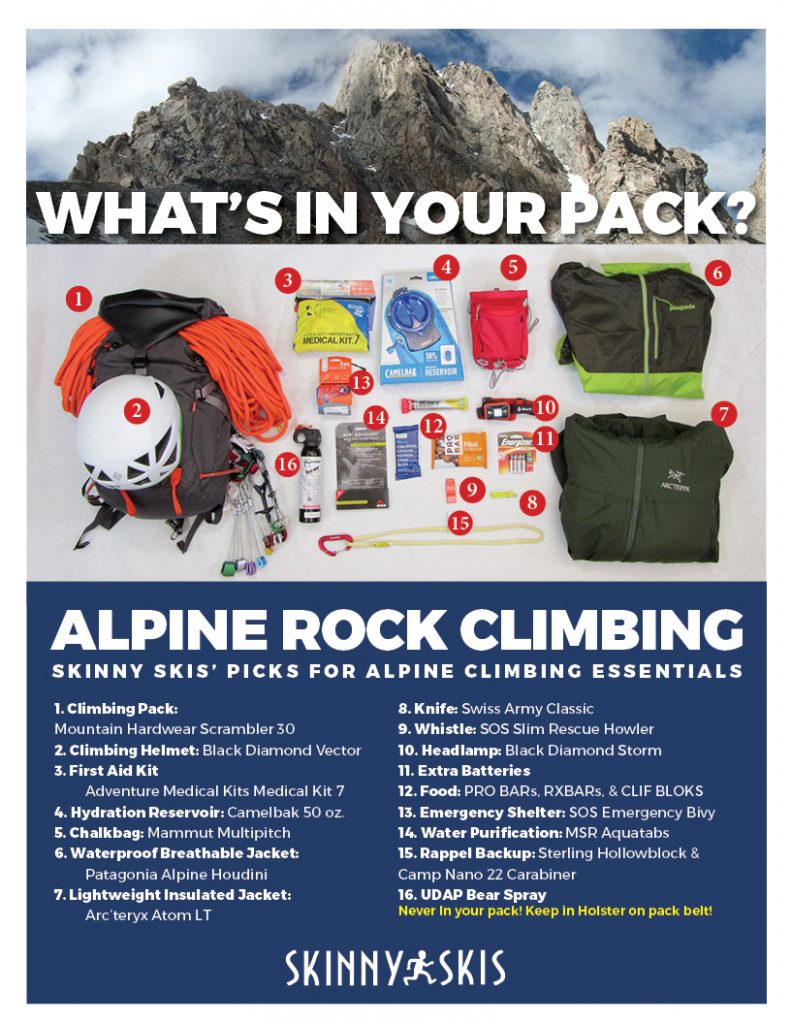Climbing season isn’t over. The end of August and into September; weather can be perfect for climbing in the Tetons. The cooler weather and reduced traffic means you need to be even more self-reliant.
What you carry in your pack can determine whether a minor injury turns into a epic, or is just a minor inconvenience. The classic list of the ’10 essentials’ breaks down the necessities into an easy to understand list of things that can get you out of the mountains, or get your through the night.
Here’s the Ten Essentials Classic List:
- Map
- Compass (optionally supplemented with a GPS receiver)
- Sunglasses and sunscreen
- Extra clothing
- Headlamp (or flashlight)
- First-aid supplies
- Firestarter
- Matches
- Knife
- Extra food
In 2003, the essential list was revised as part of the seventh edition of Mountaineering: The Freedom of the Hills[4] to keep up with modern equipment. The current edition, 8th edition[3] continues with the new essentials list with no major revisions. The new list takes a “systems” or functional approach.
- Navigation. Topographic map and assorted maps in waterproof container plus a magnetic compass, optional altimeter or GPS receiver.
- Sun protection. Sunglasses, sunscreen for lips and skin, hat, clothing for sun protection.
- Insulation. Hat, gloves, jacket, extra clothing for coldest possible weather during current season.
- Illumination. Headlamp, flashlight, batteries. LED bulb is preferred to extend battery life.
- First-aid supplies, plus insect repellent.
- Fire. Butane lighter, matches in waterproof container.
- Repair kit and tools. Knives, multi-tool, scissors, pliers, screwdriver, trowel/shovel, duct tape, cable ties.
- Nutrition. Add extra food for one additional day (for emergency). Dry food is preferred to save weight and usually needs water.
- Hydration. Add extra 2 liters of water for one additional day (for emergency).
- Emergency shelter. Tarp, bivouac sack, space blanket, plastic tube tent, jumbo trash bags, insulated sleeping pad.
See this list of some essentials, as well as a few nice-to-haves, to help you with packing for your next alpine climb.
Watch our blog, The Skinny, for more posts in the future, where we share things to do, and how to prepare for them.

